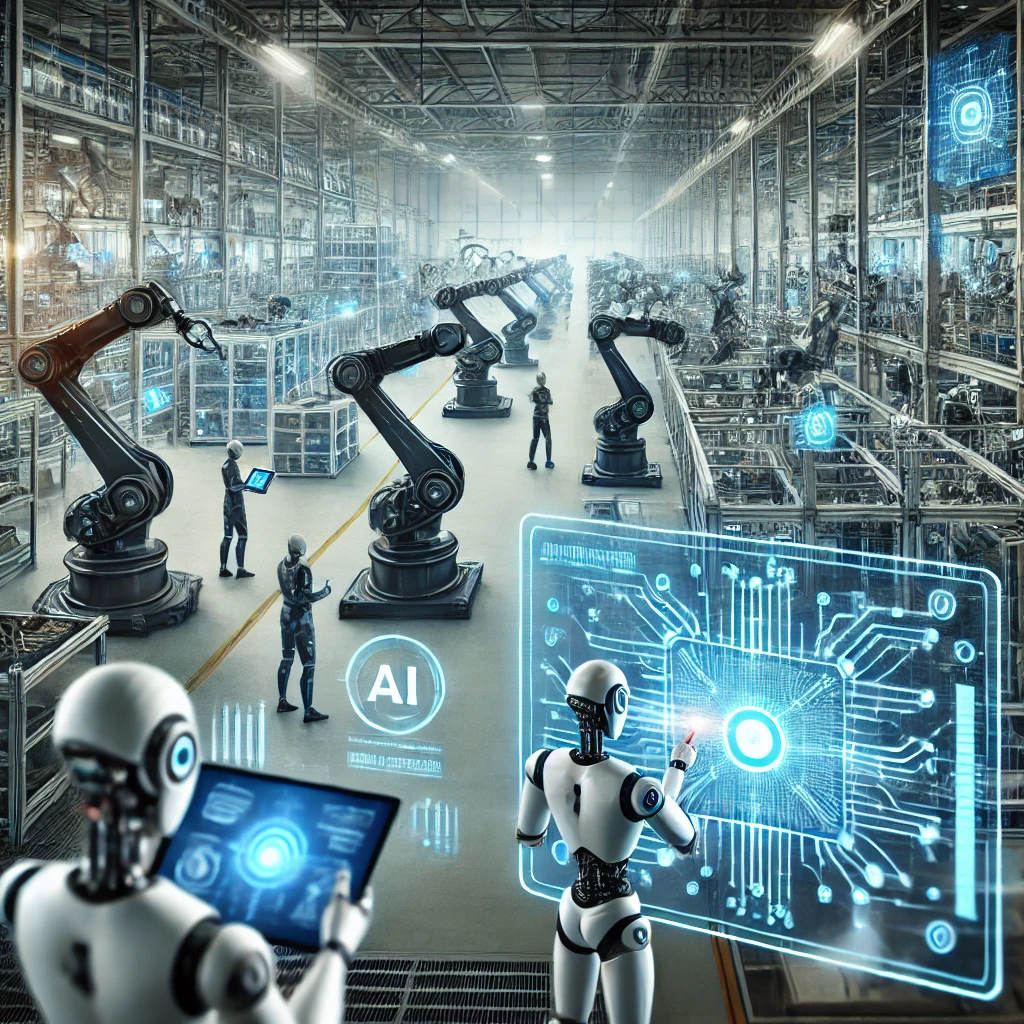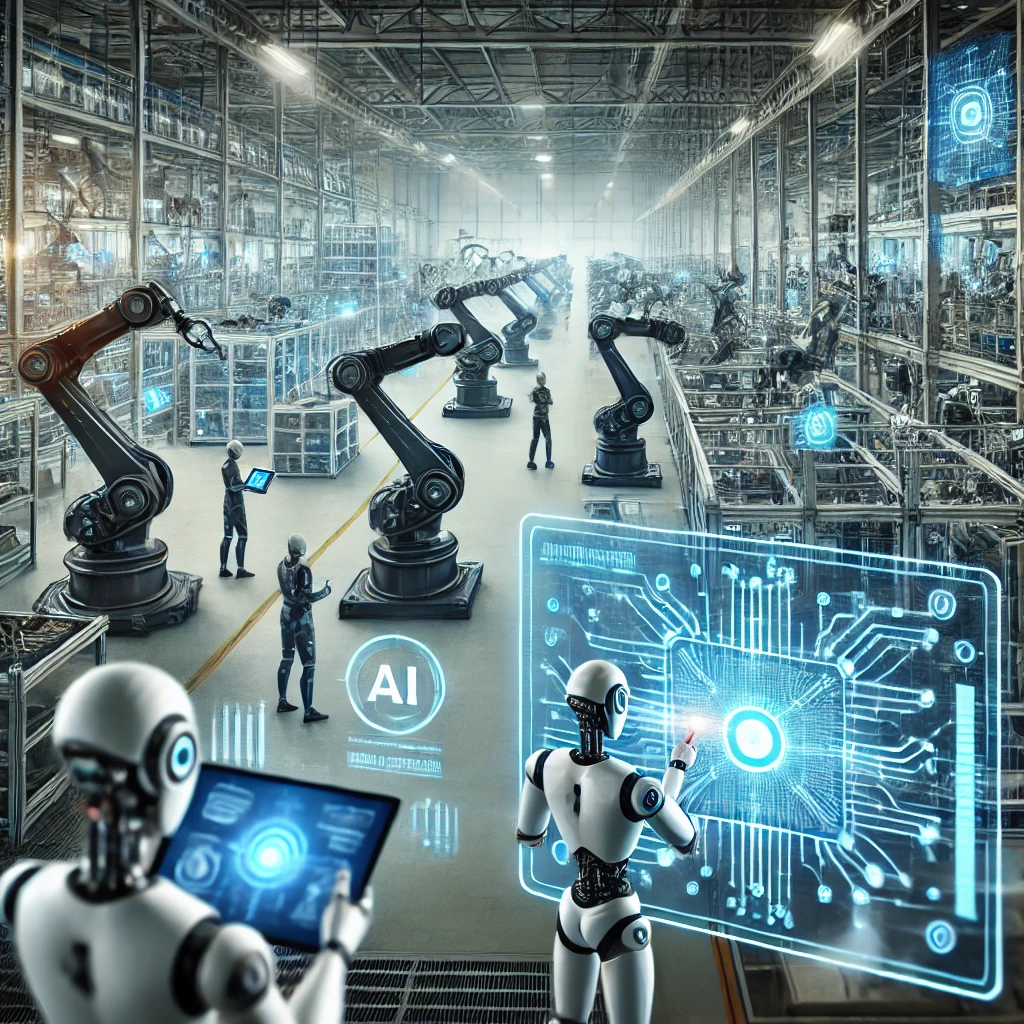The rapid evolution of technology has ushered in an era where artificial intelligence (AI) and machine learning (ML) are no longer just futuristic concepts but have become integral components of modern business practices. Applied AI and machine learning have taken center stage, driving innovation, boosting efficiency, and unlocking unprecedented opportunities across diverse sectors. From manufacturing to healthcare, finance to retail, the profound impact of these technologies is transforming industries in ways previously unimaginable.
1. Understanding Applied AI and Machine Learning
Before diving into the real-world applications, it’s essential to differentiate between AI and ML and understand how they contribute to industry transformation. AI refers to the simulation of human intelligence in machines, enabling them to perform tasks like problem-solving, learning, and adapting. Machine learning, a subset of AI, focuses on the development of algorithms that allow computers to learn from and make decisions based on data.
Applied AI refers to the practical use of AI technologies to solve specific, often industry-related problems. Machine learning, in particular, plays a pivotal role in applied AI by providing systems with the capability to learn autonomously and improve their performance without explicit programming.
2. AI and ML in Healthcare: Revolutionizing Diagnostics and Treatment
One of the most significant transformations brought about by AI and ML is in the healthcare industry. Medical professionals are leveraging AI-driven tools to enhance diagnostics, personalize treatments, and optimize hospital workflows.
- Diagnostics: Machine learning algorithms are used to analyze medical images, such as X-rays, MRIs, and CT scans, to detect anomalies with high accuracy. These tools are capable of identifying diseases like cancer and neurological disorders much earlier than traditional diagnostic methods. For example, AI-driven imaging tools have improved the detection rates of early-stage cancers, offering patients a better chance of recovery.
- Predictive Analytics: Hospitals and clinics are utilizing AI to predict patient outcomes and optimize treatment plans. Machine learning models analyze patient data, including medical history, lifestyle choices, and genetic information, to forecast disease progression and recommend personalized treatment options.
- Drug Discovery: AI is revolutionizing drug discovery by significantly reducing the time and cost associated with developing new medications. Machine learning models analyze biological data to identify potential drug candidates and predict how they might interact with human cells, speeding up the development process.
3. Manufacturing and Industry 4.0: Driving Efficiency and Automation
In the manufacturing sector, AI and machine learning are key drivers behind Industry 4.0, a term used to describe the digital transformation of manufacturing processes.
- Predictive Maintenance: AI-powered predictive maintenance systems monitor machinery in real time, identifying potential failures before they happen. This reduces downtime, extends equipment life, and minimizes maintenance costs. By analyzing data from sensors embedded in machines, machine learning models can predict when components are likely to fail, allowing for timely intervention.
- Quality Control: Machine learning algorithms are transforming quality control by automating the inspection process. Instead of relying on human inspectors, AI systems can quickly identify defects in products or materials, leading to higher accuracy and reduced waste. These systems are particularly effective in industries like automotive and electronics manufacturing.
- Supply Chain Optimization: AI is also reshaping the supply chain by providing greater visibility and enabling smarter decision-making. Machine learning models analyze factors like demand fluctuations, inventory levels, and supplier performance to optimize supply chain operations. This leads to more efficient production schedules, reduced lead times, and lower operational costs.

4. Finance and Banking: Enhancing Security and Efficiency
The finance and banking industry has been quick to adopt AI and machine learning technologies, leveraging them to improve customer service, detect fraud, and streamline operations.
- Fraud Detection: AI-powered fraud detection systems analyze transaction data in real time to identify suspicious activity. Machine learning models learn from historical data to detect patterns that indicate fraudulent behavior, such as unusual spending patterns or unauthorized access to accounts. These systems are crucial in preventing financial crimes and protecting customers’ assets.
- Algorithmic Trading: In the realm of investment and stock markets, machine learning algorithms are used for algorithmic trading, where AI models analyze vast amounts of data to make informed investment decisions. These systems can execute trades at speeds far beyond human capabilities, optimizing returns based on market conditions and trends.
- Customer Experience: AI-powered chatbots and virtual assistants have transformed customer service in the banking sector. Machine learning enables these systems to learn from customer interactions, providing personalized responses and improving the overall customer experience. They can handle routine tasks like checking account balances, processing transactions, and answering common inquiries, freeing up human agents for more complex tasks.
5. Retail: Personalizing the Shopping Experience
The retail industry is undergoing a transformation driven by AI and machine learning, particularly in areas related to customer experience, inventory management, and pricing strategies.
- Personalized Recommendations: E-commerce platforms and brick-and-mortar retailers are using AI-driven recommendation engines to provide personalized shopping experiences. Machine learning algorithms analyze customer behavior, such as browsing history and past purchases, to recommend products that align with their preferences. This increases customer satisfaction and drives sales.
- Dynamic Pricing: Retailers are adopting AI-powered dynamic pricing strategies to stay competitive. Machine learning models analyze factors like demand, competitor pricing, and inventory levels to adjust prices in real time. This allows retailers to optimize pricing strategies and maximize profits while offering competitive prices to consumers.
- Inventory Management: AI and machine learning are also improving inventory management by predicting demand and optimizing stock levels. Machine learning models analyze sales data, market trends, and seasonal fluctuations to forecast demand accurately, ensuring that retailers have the right products in stock at the right time.
6. Transportation and Logistics: Optimizing Routes and Reducing Costs
AI and machine learning are playing a pivotal role in the transformation of transportation and logistics, particularly in optimizing delivery routes, reducing operational costs, and improving supply chain visibility.
- Route Optimization: Machine learning algorithms are used to analyze traffic patterns, weather conditions, and delivery schedules to optimize transportation routes. This reduces delivery times, fuel consumption, and operational costs for logistics companies. Major logistics firms like UPS and FedEx are leveraging AI to optimize their delivery networks.
- Autonomous Vehicles: AI is at the heart of the development of autonomous vehicles, which have the potential to revolutionize the transportation industry. Machine learning models enable self-driving cars and trucks to navigate complex environments, detect obstacles, and make real-time decisions. While fully autonomous vehicles are still in the early stages of development, their potential impact on industries like logistics and public transportation is enormous.
7. Energy: Driving Sustainability with Smart Grids and Renewables
The energy industry is increasingly turning to AI and machine learning to drive sustainability efforts, improve energy efficiency, and optimize the integration of renewable energy sources.
- Smart Grids: AI-powered smart grids are transforming the way energy is distributed and consumed. Machine learning models analyze data from energy consumption patterns to optimize the distribution of electricity, reduce energy waste, and ensure a stable power supply. Smart grids are crucial for integrating renewable energy sources like wind and solar into the grid.
- Renewable Energy Forecasting: Machine learning algorithms are used to predict energy output from renewable sources based on weather patterns and historical data. This enables energy companies to optimize their power generation and reduce reliance on non-renewable sources.
8. Conclusion: The Future of AI and Machine Learning in Industry
The advancements in applied AI and machine learning are reshaping industries at an unprecedented pace. These technologies are driving efficiency, reducing costs, and opening new avenues for innovation. As AI and ML continue to evolve, their impact will only deepen, leading to even more transformative changes across sectors. From healthcare to manufacturing, finance to retail, and transportation to energy, the possibilities are limitless, and businesses that harness the power of AI and machine learning will be at the forefront of the next industrial revolution.

